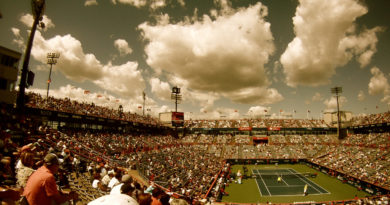Dubai’s Blooming Tourism Industry
Dubai has become a global destination for tourism in recent years, with its sparkling skyscrapers, luxury shopping, and world-class amenities drawing in millions of visitors each year. But what has propelled Dubai’s tourism industry to such great heights? How has this desert metropolis transformed itself into one of the world’s most popular travel destinations? In this blog, we will delve into the history and current state of Dubai’s tourism industry, exploring the factors that have contributed to its explosive growth and what the future holds for this desert city.
Dubai’s tourism industry has come a long way since its early days. In the 1950s and 60s, the city’s economy was primarily based on fishing and pearl diving. However, with the discovery of oil in the region, the city began to modernize and develop at a rapid pace. In the 1970s, the government of Dubai recognized the potential of tourism as a source of revenue and began investing in the development of hotels and other tourist infrastructure.
One of the key factors that has contributed to Dubai’s success as a tourism destination is its strategic location. Situated on the southeast coast of the Arabian Peninsula, the city is a gateway to the Middle East, Africa, and Asia. This makes it an ideal stopover destination for travelers on their way to other parts of the region. Additionally, Dubai’s proximity to the equator means that it has a hot and dry climate all year round, making it an attractive destination for sun-seekers.
Another major factor that has contributed to Dubai’s success as a tourism destination is the government’s commitment to investing in the development of world-class infrastructure and amenities. Dubai is home to some of the world’s most iconic and impressive architectural feats, such as the Burj Khalifa, the tallest building in the world, and the Burj Al Arab, the world’s most luxurious hotel. Additionally, the city boasts an array of world-class shopping, dining, and entertainment options, such as the Dubai Mall and the Dubai Fountain.
The government’s investment in infrastructure and amenities has also been accompanied by a focus on developing a diverse range of tourist offerings. In addition to its modern architecture and luxury shopping and dining options, Dubai is also home to a variety of cultural and historical attractions. Visitors can explore the city’s rich history at the Dubai Museum, or take a traditional abra boat ride through the winding waterways of the historic Deira neighborhood. Additionally, the city has a thriving arts scene, with a number of galleries and museums showcasing the work of local and international artists.
Dubai’s tourism industry has also been boosted by the government’s efforts to promote the city as a destination for business and leisure travel. The city has a well-developed and sophisticated transportation infrastructure, making it easy for visitors to get around. Additionally, the government has implemented a number of initiatives to make it easier for visitors to obtain a visa, such as the introduction of a visa-on-arrival system for certain nationalities.
The future of Dubai’s tourism industry looks bright. The government has set ambitious targets for the number of visitors to the city, with plans to attract 40 million visitors per year by 2031. Additionally, the city is currently in the process of developing a number of major new tourist attractions, such as the Dubai Creek Harbour, which will feature a number of new hotels, shopping centers, and other amenities.
In conclusion, Dubai’s tourism industry has come a long way since its early days. From its humble beginnings as a fishing and pearl diving community, the city has transformed itself into one of the world’s most popular travel destinations. Its strategic location, world-class infrastructure, diverse range of tourist offerings, and government commitment to promoting the city as a destination for business and leisure travel




